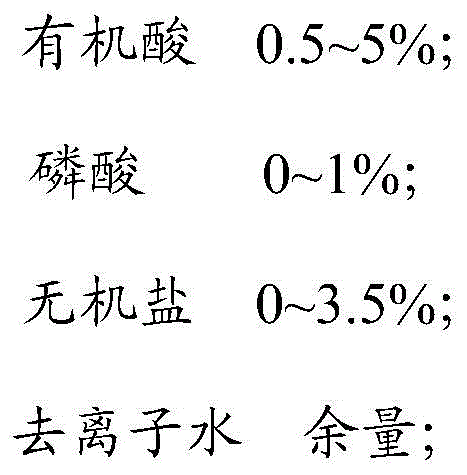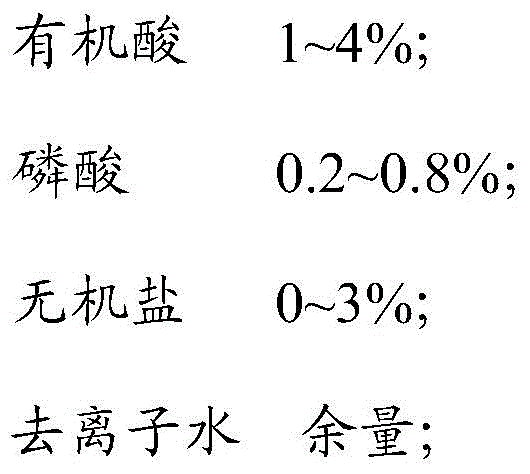A kind of cell affinity agent and preparation method thereof for improving in vitro infection efficiency of duck flavin virus
An in vitro infection, duck flavivirus technology, applied in virus/phage, microorganism-based methods, biochemical equipment and methods, etc., can solve the problem of low cell infection efficiency, insufficient virus titer, slow primary virus culture process, etc. problem, to achieve the effect of improving in vitro infection efficiency and increasing affinity
- Summary
- Abstract
- Description
- Claims
- Application Information
AI Technical Summary
Problems solved by technology
Method used
Image
Examples
Embodiment 1
[0039] A kind of cell substantivity agent that improves duck yellow virus in vitro infection efficiency, it is prepared from the following components by mass percentage:
[0040]
[0041] Wherein, the inorganic salt is a mixture of sodium sulfate, disodium hydrogen phosphate, and potassium chloride.
[0042] Wherein, the sodium sulfate accounts for 0.3% of the total affinity agent; the sodium dihydrogen phosphate accounts for 1.6% of the total affinity agent; and the potassium chloride accounts for 1% of the total affinity agent.
[0043] Specifically, the affinity agent is prepared according to the following steps: weigh malonic acid, phosphoric acid, sorbic acid, malic acid, sodium sulfate, disodium hydrogen phosphate, potassium chloride according to the formula, Dissolve in deionized water according to formula and filter.
Embodiment 2
[0045] A kind of cell substantivity agent that improves duck yellow virus in vitro infection efficiency, it is prepared from the following components by mass percentage:
[0046]
[0047] Wherein, the inorganic salt is a mixture of sodium sulfate, disodium hydrogen phosphate, potassium chloride and sodium chloride.
[0048] Wherein, the sodium sulfate accounts for 0.25% of the total affinity agent; the sodium dihydrogen phosphate accounts for 1% of the total affinity agent; the potassium chloride accounts for 0.5% of the total affinity agent; The sodium chloride accounts for 0.75% of the total affinity agent.
[0049] Specifically, the affinity agent is prepared according to the following steps: weigh malonic acid, phosphoric acid, sorbic acid, malic acid, sodium sulfate, disodium hydrogen phosphate, potassium chloride, sodium chloride , Dissolve the above components in the deionized water of the formula, and filter to obtain.
Embodiment 3
[0051] A kind of cell substantivity agent that improves duck yellow virus in vitro infection efficiency, it is prepared from the following components by mass percentage:
[0052]
[0053]
[0054] Wherein, the inorganic salt is a mixture of sodium sulfate, disodium hydrogen phosphate, and sodium chloride.
[0055] Wherein, the sodium sulfate accounts for 0.2% of the total affinity agent; the sodium dihydrogen phosphate accounts for 1.5% of the total affinity agent; and the sodium chloride accounts for 1% of the total affinity agent.
[0056] Specifically, the affinity agent is prepared according to the following steps: weigh malonic acid, phosphoric acid, sorbic acid, malic acid, sodium sulfate, disodium hydrogen phosphate, sodium chloride according to the formula, Dissolve in deionized water according to formula and filter.
PUM
 Login to View More
Login to View More Abstract
Description
Claims
Application Information
 Login to View More
Login to View More - R&D
- Intellectual Property
- Life Sciences
- Materials
- Tech Scout
- Unparalleled Data Quality
- Higher Quality Content
- 60% Fewer Hallucinations
Browse by: Latest US Patents, China's latest patents, Technical Efficacy Thesaurus, Application Domain, Technology Topic, Popular Technical Reports.
© 2025 PatSnap. All rights reserved.Legal|Privacy policy|Modern Slavery Act Transparency Statement|Sitemap|About US| Contact US: help@patsnap.com



